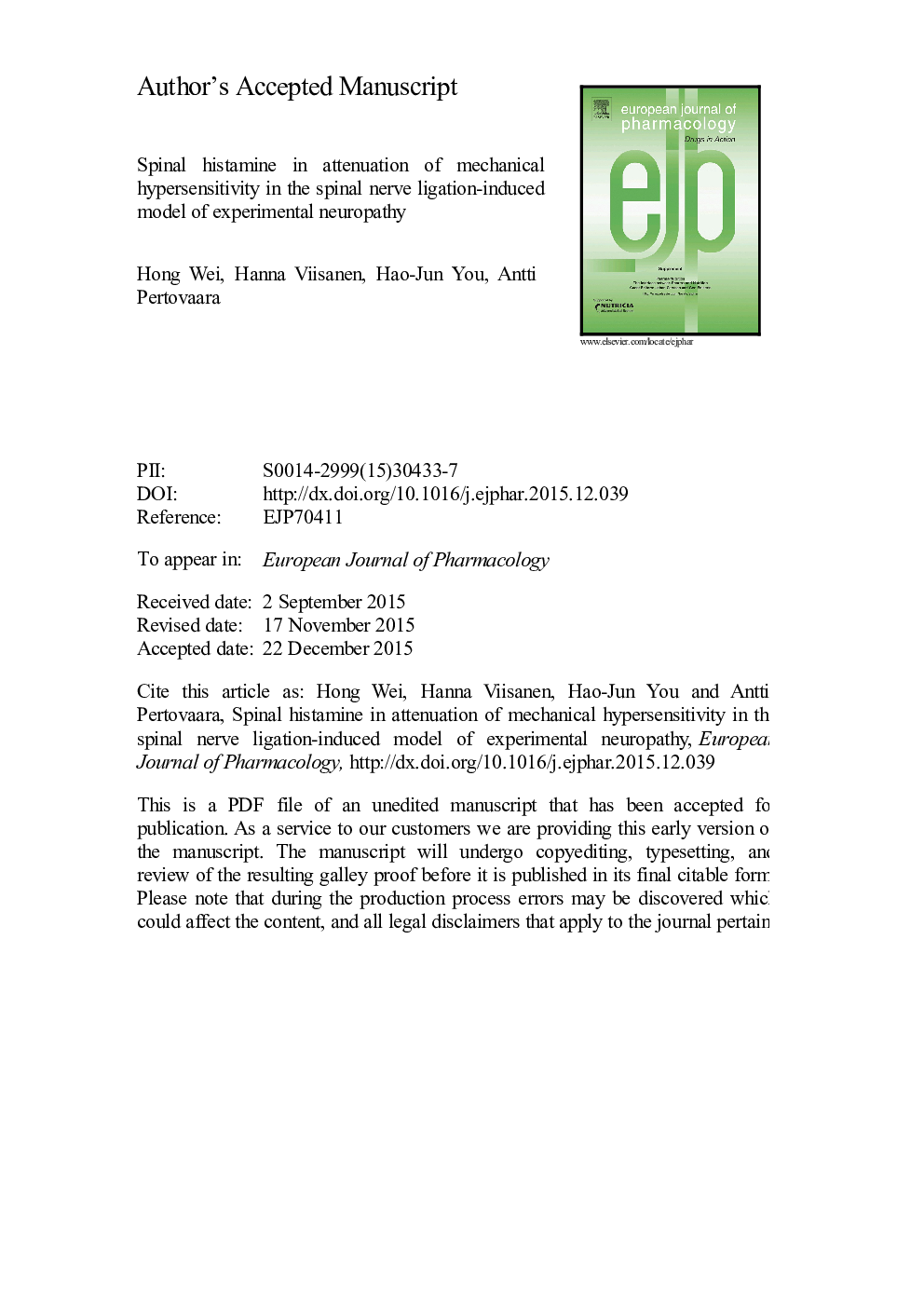| Article ID | Journal | Published Year | Pages | File Type |
|---|---|---|---|---|
| 5826799 | European Journal of Pharmacology | 2016 | 45 Pages |
Abstract
Here we studied whether and through which mechanisms spinal administration of histamine dihydrochloride (histamine) attenuates pain behavior in neuropathic animals. Experiments were performed in rats with spinal nerve ligation-induced neuropathy and a chronic intrathecal catheter for spinal drug delivery. Mechanical hypersensitivity was assessed with monofilaments while radiant heat was used for assessing nociception. Ongoing neuropathic pain and its attenuation by histamine was assessed using conditioned place-preference test. Following spinal administration, histamine at doses 0.1-10 µg produced a dose-related mechanical antihypersensitivity effect. With prolonged treatment (twice daily 10 µg for five days), the antihypersensitivity effect of spinal histamine was reduced. In place-preference test, neuropathic animals preferred the chamber paired with histamine (10 µg). Histamine (10 µg) failed to influence heat nociception in neuropathic animals or mechanically induced pain behavior in a group of healthy control rats. Histamine-induced mechanical antihypersensitivity effect was prevented by spinal pretreatment with zolantidine (histamine H2 receptor antagonist), prazosine (α1-adrenoceptor antagonist) and bicuculline (γ-aminobutyric acid subtype A, GABAA, receptor antagonist), but not by pyrilamine (histamine H1 receptor antagonist), atipamezole (α2-adrenoceptor antagonist), or raclopride (dopamine D2 receptor antagonist). A-960656, a histamine H3 receptor antagonist alone that presumably increased endogenous histamine levels reduced hypersensitivity. Additionally, histamine prevented central (presumably postsynaptically-induced) facilitation of hypersensitivity induced by N-methyl-d-aspartate. The results indicate that spinal histamine at the dose range of 0.1-10 µg selectively attenuates mechanical hypersensitivity and ongoing pain in neuropathy. The spinal histamine-induced antihypersensitivity effect involves histamine H2 and GABAA receptors and (presumably neuropathy-induced) co-activation of spinal α1-adrenoceptors.
Related Topics
Life Sciences
Neuroscience
Cellular and Molecular Neuroscience
Authors
Hong Wei, Hanna Viisanen, Hao-Jun You, Antti Pertovaara,
